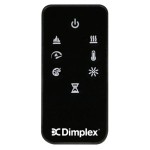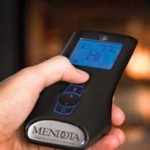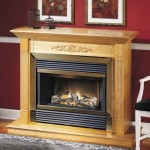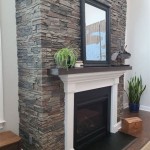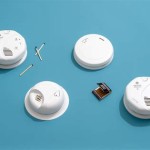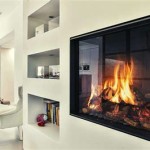Fireplace Insert Boise Idaho: A Comprehensive Guide
The desire for efficient and aesthetically pleasing heating solutions has driven advancements in fireplace technology. In Boise, Idaho, fireplace inserts are gaining popularity as a way to revitalize existing fireplaces, offering improved heating performance, enhanced safety, and updated aesthetics. Understanding the types, benefits, and selection process for fireplace inserts is essential for homeowners considering this upgrade.
A fireplace insert is a self-contained heating appliance designed to be installed inside an existing fireplace opening. Unlike traditional open fireplaces, inserts are closed combustion systems, burning fuel more efficiently and directing heat into the living space rather than up the chimney. They offer a controlled burn, reducing the risk of stray embers escaping and improving overall safety. The Boise climate, with its cold winters, makes fireplace inserts a valuable asset for supplemental heating and energy cost savings.
Types of Fireplace Inserts
Fireplace inserts are categorized by the type of fuel they use, each offering distinct advantages and disadvantages. Selecting the appropriate type depends on homeowner preferences, fuel availability, and desired heating output.
Wood Inserts: Wood-burning inserts are a traditional choice, offering the ambiance of a wood fire and the potential for significant heat output. Modern wood inserts are designed to be highly efficient, meeting stringent EPA emissions standards. They typically use a catalytic combustor or non-catalytic design to achieve cleaner and more complete combustion. The primary advantage of wood inserts is the potential for using readily available and renewable fuel sources, especially for homeowners with access to firewood. However, wood inserts require manual loading of fuel, regular maintenance including ash removal, and proper storage of firewood. Furthermore, wood-burning inserts necessitate a dedicated chimney liner that meets safety standards.
Gas Inserts: Gas fireplace inserts offer convenience and ease of use. They are fueled by natural gas or propane, providing a consistent and controllable heat source. Gas inserts often feature thermostatic controls, allowing homeowners to maintain a desired room temperature automatically. They can be operated with a remote control, adding to the convenience. Gas inserts typically require professional installation, including gas line connections and venting modifications. The cost of gas inserts can be higher than wood inserts initially, but the convenience and lower maintenance requirements can offset this cost in the long run. Additionally, gas inserts offer the option of decorative features like realistic log sets and adjustable flame heights.
Electric Inserts: Electric fireplace inserts are the simplest to install and operate. They require no venting, making them suitable for homes without existing chimneys. Electric inserts use electricity to generate heat and typically include a realistic flame effect for visual appeal. While they do not provide the same level of heat output as wood or gas inserts, electric inserts are a cost-effective option for supplemental heating and aesthetic enhancement. The installation process is typically straightforward, often only requiring plugging the unit into a standard electrical outlet. Electric inserts are ideal for apartments, condos, or homes where wood or gas options are not feasible or desired.
Benefits of Installing a Fireplace Insert
Upgrading to a fireplace insert offers numerous advantages over traditional open fireplaces, including improved heating efficiency, enhanced safety, and aesthetic improvements.
Improved Heating Efficiency: Open fireplaces are notoriously inefficient, with much of the heat escaping up the chimney. Fireplace inserts, being closed combustion systems, significantly improve heating efficiency. They are designed to radiate heat into the room, maximizing the thermal output and reducing energy waste. The efficiency of a fireplace insert is typically measured by its BTU (British Thermal Unit) output and its overall efficiency rating. High-efficiency inserts can significantly reduce heating costs, especially when used as a supplemental heating source during colder months. The installation of a blower fan can further enhance heat distribution, circulating warm air throughout the room.
Enhanced Safety: Open fireplaces pose safety risks due to the potential for stray embers escaping, leading to house fires. Fireplace inserts mitigate this risk by containing the fire within a closed combustion chamber. They also prevent backdrafting, which can draw harmful gases such as carbon monoxide into the home. The use of a dedicated chimney liner is crucial for safely venting combustion gases. Regular inspections and maintenance are essential to ensure the safe and efficient operation of the fireplace insert.
Aesthetic Improvements: Fireplace inserts offer a wide range of aesthetic options, allowing homeowners to update the appearance of their fireplaces. They are available in various styles, finishes, and sizes to complement any décor. The choice of log sets, flame patterns, and surround materials allows for customization to match individual preferences. A fireplace insert can transform a dated and inefficient fireplace into a focal point of the room, adding both warmth and visual appeal. The ability to customize the appearance of the insert makes it a versatile upgrade for any home.
Selecting the Right Fireplace Insert
Choosing the right fireplace insert requires careful consideration of several factors, including the size of the fireplace opening, the desired heating output, fuel availability, and budget constraints.
Measuring the Fireplace Opening: Accurate measurements of the fireplace opening are crucial for selecting an insert that fits properly. The width, height, and depth of the opening must be determined to ensure that the insert can be installed safely and effectively. Most manufacturers provide detailed specifications for their inserts, including the required dimensions of the fireplace opening. Consulting with a professional installer is recommended to ensure accurate measurements and proper fit. A fireplace insert that is too large or too small can compromise its performance and safety.
Determining Heating Needs: The desired heating output should be determined based on the size of the room or area to be heated. Fireplace inserts are rated by their BTU output, which indicates the amount of heat they can produce. A larger room will require an insert with a higher BTU rating. Factors such as insulation levels, climate, and window placement can also affect heating requirements. Consulting with a heating professional can help determine the appropriate BTU rating for the specific needs of the home. Over sizing or under sizing the insert can lead to inefficient heating and discomfort.
Considering Fuel Availability and Cost: The availability and cost of fuel are important considerations when selecting a fireplace insert. Wood-burning inserts require a readily available source of firewood, while gas inserts require access to natural gas or propane. The cost of fuel can vary depending on location and market conditions. Electric inserts require access to electricity, which is generally readily available but can result in higher electricity bills. Evaluating the long-term fuel costs associated with each type of insert is essential for making an informed decision. Additionally, consider the environmental impact associated with each fuel source.
Evaluating EPA Emission Standards: For wood-burning inserts, it is crucial to evaluate the EPA emission standards. EPA-certified inserts are designed to burn cleaner and more efficiently, reducing air pollution and improving indoor air quality. Look for inserts that meet the latest EPA standards and are listed on the EPA's certified wood heater database. Lower emissions translate to a healthier environment and potentially lower firewood consumption. In certain areas, the use of non-certified wood-burning appliances may be restricted or prohibited.
Professional Installation: Proper installation is critical for the safe and efficient operation of a fireplace insert. It is highly recommended to hire a qualified and certified installer to ensure that the insert is installed according to manufacturer's specifications and local building codes. Professional installers have the expertise to properly connect gas lines, install chimney liners, and ensure proper ventilation. Improper installation can lead to safety hazards such as carbon monoxide poisoning or fire. The cost of professional installation is a worthwhile investment to ensure the long-term safety and performance of the fireplace insert.
Maintenance and Safety Checks: Regular maintenance is essential for the safe and efficient operation of a fireplace insert. Wood-burning inserts require regular ash removal, chimney sweeping, and inspection of the chimney liner. Gas inserts require periodic cleaning of the burner and inspection of the gas lines. Electric inserts require minimal maintenance, but the heating elements should be inspected periodically. It is recommended to schedule annual inspections and maintenance by a qualified technician to ensure that the insert is functioning properly and safely. Regular maintenance can prolong the life of the insert and prevent costly repairs. Smoke detectors and carbon monoxide detectors should be installed and maintained to provide early warning of potential hazards.

Electric Fireplace Insert Kootenai St Boise Idaho Chimney

Whole Fireplaces Of Idaho 3919 W Overland Rd Boise Fireplace Services Phone Number Yelp

Cosmo Insert 30 Gas Leisure Time Inc

Electric Fireplace Insert Kootenai St Boise Idaho Chimney

Fireplace Whole 11691 W President Dr Boise Idaho Services Phone Number Yelp

Projects List Idaho Fireplace Chimney

Fireplace Whole 11691 W President Dr Boise Idaho Services Phone Number Yelp

Fireplaces Nampa Caldwell Fireplace Cleaning Repair Air Comfort

Top 10 Best Gas Fireplace Insert Installation In Boise Id February 2024 Yelp

Qfi30 Firebrick Gas Insert Leisure Time Inc
Related Posts

